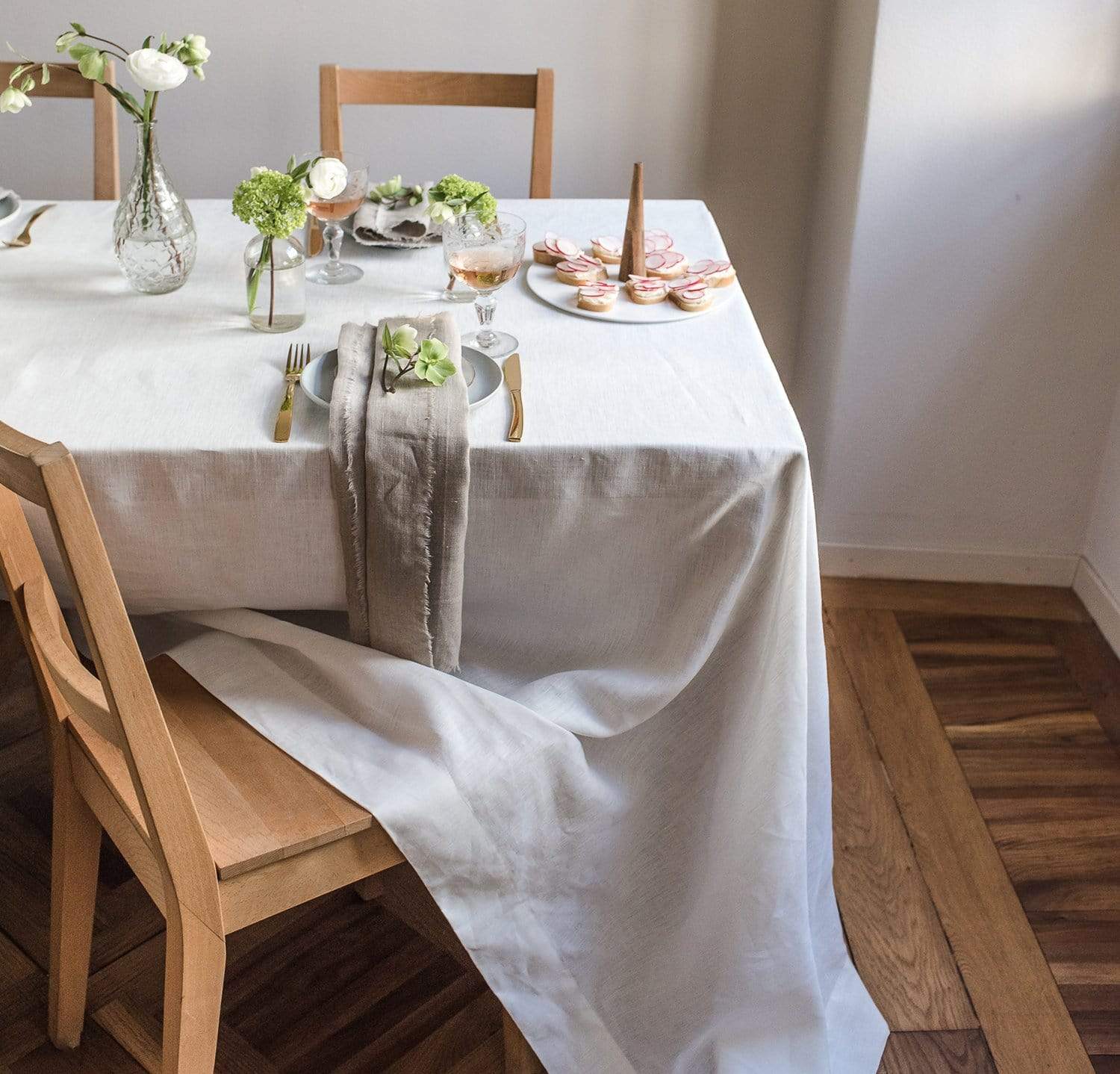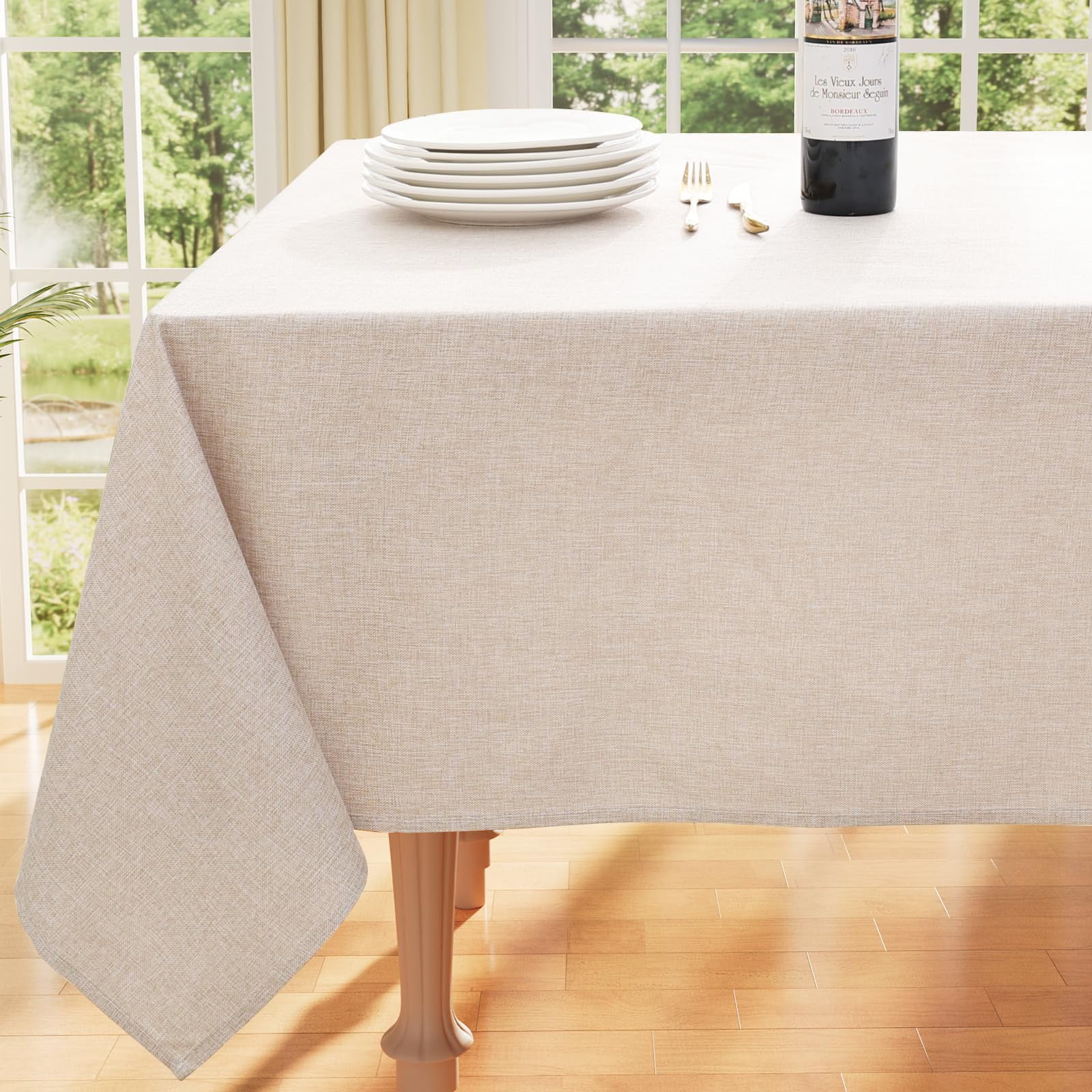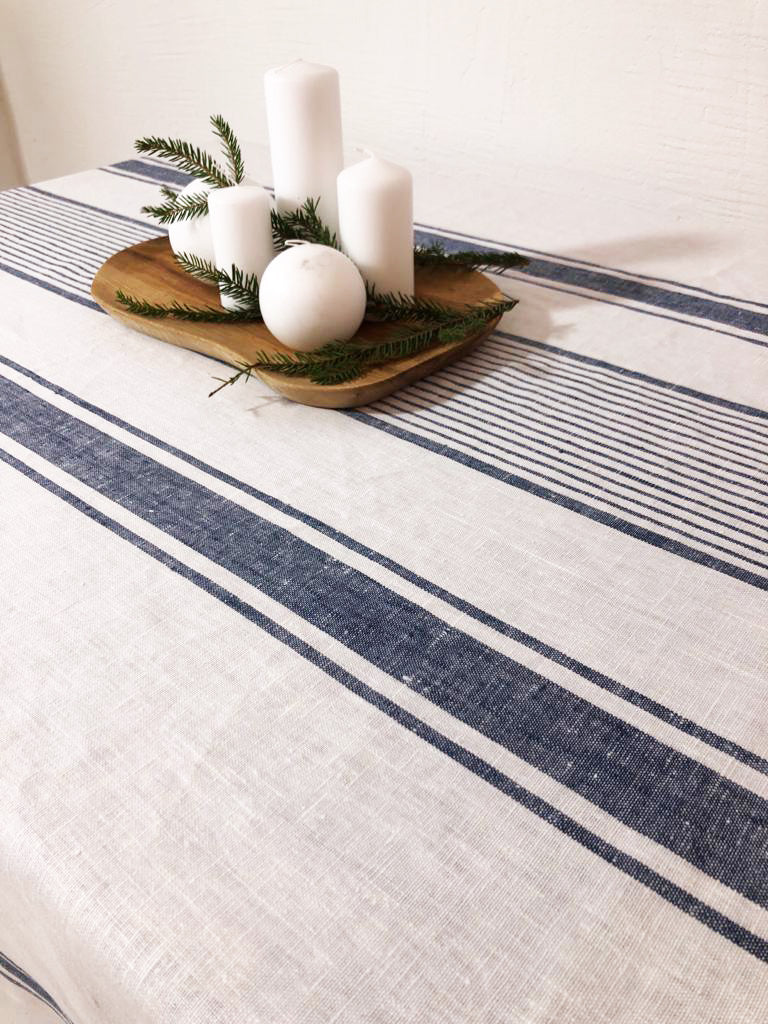Lovely Table Cloths: Boost Your Dining-room Decoration
Lovely Table Cloths: Boost Your Dining-room Decoration
Blog Article
Bed Linen Fabric Developments: Discovering Modern Trends and Creative Applications in Style and Fabric Market
From sustainable manufacturing methods to sophisticated weaving modern technologies, the development of linen is reshaping the landscape of the fabric market. As we dive right into the worlds of imaginative layout applications and the development of linen blends and hybrid materials, a new chapter unfolds in which bed linen's duty in future fabric advancements takes center stage.
Lasting Practices in Bed Linen Manufacturing
Sustainable practices in linen manufacturing have come to be significantly vital in the textile sector's efforts to lessen ecological impact and advertise moral sourcing techniques. Linen, an all-natural fiber originated from the flax plant, provides a variety of benefits such as biodegradability, breathability, and sturdiness. Nevertheless, traditional approaches of linen production can include significant water usage, pesticide use, and energy-intensive procedures.
To address these challenges, several fabric manufacturers are taking on lasting techniques throughout the bed linen production procedure. This includes sourcing flax from natural farms that avoid hazardous pesticides and chemicals, implementing water-efficient retting strategies to essence fibers from the flax stalks, and making use of environmentally friendly dyes and coatings. Furthermore, some firms are purchasing eco-friendly power resources to power their production centers and reducing waste with recycling and upcycling efforts.
Technological Improvements in Linen Weaving
With the expanding focus on sustainable methods in bed linen manufacturing, the fabric market is now witnessing a surge in technical improvements specifically aimed at changing the art of bed linen weaving. These technologies are reshaping the method bed linen textiles are created, offering raised effectiveness, top quality, and creative thinking in weaving methods.
Among the crucial technical improvements in linen weaving is the integration of computerized looms. These innovative looms are furnished with software application that permits complex and complicated layouts to be woven with precision. By digitizing the weaving procedure, manufacturers can accomplish greater consistency and precision in their bed linen fabrics.
Moreover, innovations in yarn spinning modern technology have enabled the manufacturing of finer and even more long lasting linen threads - table cloths. This leads to softer and smoother bed linen materials that preserve their high quality even after numerous usages and laundries
Furthermore, the development of environment-friendly dyeing processes and finishes for bed linen textiles is gaining traction. These sustainable practices not only minimize the ecological effect however also provide to the boosting consumer demand for fairly generated textiles.
Creative Design Applications for Bed Linen
Ingenious imaginative techniques are significantly forming the creative design applications for linen in the fabric industry. Bed linen's natural aesthetic appeal and capacity to blend with various other materials make it a favored choice for creating special garments and accessories that provide to the eco aware consumer.
Additionally, designers are experimenting with bed linen in home decoration, utilizing its sturdy and breathable nature to craft trendy home furnishings such as drapes, bed linen, and furniture. The structure and drape of bed linen bring a feeling of elegance and convenience to indoor spaces, including a touch of style to modern-day homes.

Linen Blends and Hybrid Fabrics

Crossbreed textiles, on the other hand, take the principle of blending a step further by including additional components such as metallic strings, recycled products, or conductive fibers. These innovative textiles not just broaden the style opportunities however additionally introduce functional aspects like conductivity, antimicrobial residential or commercial properties, or improved durability. Hybrid textiles are progressively being made use of in different markets, consisting of fashion, interior design, and technical textiles, where the need for multifunctional products gets on the surge.
Linen's Role in Future Textile Innovations

In the realm of future fabric technologies, linen is expected to be a principal in the advancement of sophisticated practical textiles. Scientists and designers are checking out methods to improve bed linen's inherent top qualities via technological advancements, such as incorporating wise textiles, nanotechnology, and efficiency surfaces. These advancements intend to boost bed linen's efficiency qualities, making it ideal for a wider range of applications, from activewear to protective garments.
Furthermore, the mix of linen with various other all-natural or synthetic fibers opens limitless opportunities for producing unique textiles with distinct residential or commercial properties and capabilities. By leveraging linen's qualities and discovering innovative blends, the textile industry is positioned to present interesting developments that accommodate progressing customer needs and sustainability needs.
Conclusion
To conclude, the exploration of lasting methods, click to investigate technological developments, innovative design applications, linen blends, and its role in future textile developments highlight the constant evolution of linen material in the modern design and textile market. With a concentrate on advancement and creativity, the flexibility and green nature of bed linen make it a beneficial material for producers and developers alike, leading the way for more growths and innovations in the field of fabrics.
As we delve into the realms of imaginative layout applications and the development of bed linen blends and hybrid textiles, a brand-new chapter unfolds in which bed linen's function in future textile developments takes center stage.
Checking out the combination of bed linen with other textiles has led to the appearance of innovative blends and crossbreed fabrics in the contemporary fabric market. Bed linen blends supply a special mix of the features of bed linen with those of other fibers, resulting in materials that have boosted homes such as enhanced longevity, enhanced draping, and decreased wrinkling.The evolution of linen blends and crossbreed fabrics has actually set the phase for Bed linen to play a critical function in driving future fabric technologies.In the realm of future fabric innovations, bed linen is anticipated to be a key gamer in the growth of innovative useful textiles.
Report this page